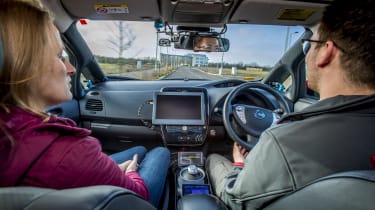Putting the human back into autonomous driving
Nissan has taken the next step in autonomous driving, completing a 230-mile trip with its latest ‘human-like’ technology. We had a ride, and spoke to the experts behind it
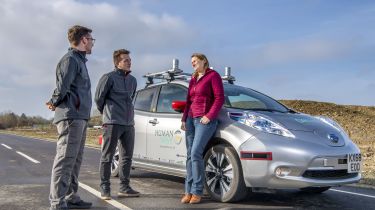
If your car has adaptive cruise control and lane-keeping assistance, which are as routine as a reversing camera on a new model in 2020, then ultimately your car can drive itself. Sort of.
But Nissan has just taken a step forward in autonomous driving that could show up even Tesla’s remarkable (if misleadingly named) 'autopilot' system. The Japanese brand has just completed a 230-mile trip in a fully autonomous Leaf over rural, unmarked roads as well as motorways, and interestingly has done so by developing autonomous driving technology that can learn and react like a human does.
Ironically, it turns out that putting the 'human factor' back into technology ultimately designed to replace humans altogether, is a good thing…
The next generation of driverless cars
In collaboration with a number of other parties, significantly Hitachi, the University of Leeds and Cranfield University, the Nissan HumanDrive project is intended to advance autonomous driving by "using machine learning to develop natural, human-like vehicle control".
The consortium has been running for over three years in the run-up to the 230-mile autonomous journey that’s been completed from rural Wales back to the Nissan Technical Centre at Cranfield. The drive took in four charging and rest stops, and 99% of it was done without intervention from the safety driver.
To start with, researchers at the University of Leeds put a broad range of motorists through simulated driving scenarios, such as driving around a parked car, to establish a range of differences and traits in how people react to the same obstacle.
Nick Blake, chief innovation strategist at Hitachi, described how the company then “took the best ideas from classic robotics and artificial intelligence, and combined the two. Using the combination of six Lidars and a front camera, you can get a very accurate 3D grid view of the world all around the car, and where the moving objects are".
Don’t worry, we didn’t know what a Lidar was, either. Turns out that it’s a laser scanner system, which on the Nissan Leaf autonomous test car was aided by military-spec GPS transmitters and a forward camera system.
The ‘human’ aspect comes from the way the car can learn how to deal with different situations, as well as in the way the car positions itself on the road. Particular attention is given to the centring on a rural road or within a motorway lane, since this is one area that was shown to make passengers feel safe and comfortable.
Many current semi-autonomous systems allow the car to gently pinball between white lines as the car constantly assesses where the lane is going, which is alarming for occupants and those in other vehicles nearby. Nissan’s new technology irons that out, not least by being able to see up to 100 metres around the car, and so delivers a much more normal-feeling driving style.
We had a passenger ride in the car that did the ‘grand drive’, albeit only over seven miles of rural roads and big motorway-junction roundabouts around Cranfield. Most notable was the way it smoothly paused at the roundabout and then carried on without coming to a total halt, having recognised that the road was clear.
That, and the smooth way the car positioned itself on the narrow, bumpy, unmarked rural stretches, felt freakishly normal. Close your eyes and you wouldn’t know the car was driving itself. Yet this is still very clearly – as anyone involved will tell you – a test project.
Looking at the enormous computer bank that takes up the entire boot of one of the Leaf test cars, it feels that (despite Nissan’s breakthrough and decades of development from the industry before that) fully autonomous driving today is still roughly where computing was when floppy discs were a thing.
How far off is autonomous driving, and do people really want it?
Nissan’s launch event for this technology featured a host of experts with a lot of letters behind their names, and I asked all of them these questions. The real answer is that nobody knows.
Matthew Ewing, vice president for engineering at Nissan’s technical centre, went so far as to say that “it’s probably at least five years or more before the technology itself is even ready, and then you have the legislation. At the moment in the UK, hands-off driving isn’t permitted and there’s a lot of work going at United Nations and EU level to work out what the certification requirements will be".
As to whether the consumer wants autonomy or not, Ewing tactfully suggested that autonomous driving “is one of those technologies that you don’t tend to want until you’ve tried it".
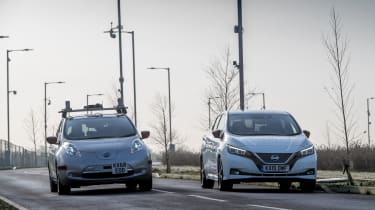
With Euro NCAP putting increasing pressure on manufacturers to fit advanced driver aids as standard, it’s reasonable to say that semi-autonomous features are already somewhat forced on consumers and manufacturers alike, and seem very likely to become more so.
As ominous as that sounds, the improving safety standard of today’s cars is definitely a good thing, and safety is at the heart of the Nissan HumanDrive project, too. According to Ewing: “This is part of our ambition to achieve zero fatalities in our cars. We know from our research that 95% of car accidents originate from human error, so enhancing the technology we have to keep drivers and pedestrians safe is a fundamental part of why we’ve done this.”
How much more advanced can autonomous driving get?
Very, is the short answer. For a start, facial-recognition technology can already read the face, mood and concentration level of the driver and has the potential to be able to read and judge the body language of other drivers on the road, allowing an autonomous car to pre-empt their next move.
Professor James Brighton of the Advanced Vehicle Engineering Centre at Cranfield University, also explained how autonomous cars could offer a ‘precedence’ system, where possibly somebody in an emergency, or even simply in a rush, could take precedence over other drivers. But Brighton did qualify that by saying that “there would have to be some governance and reward system to ensure that people didn’t take advantage – maybe points or otherwise.”
Not only that, but autonomous cars could have a scale of urgency to the driving style they deliver. An autonomous car will not break the speed limit or other road traffic laws, but it can alter its level of assertiveness on the road – whether it would bother to overtake slightly slower cars on the motorway, for instance – to suit whether you’re in a lazy mood or in a hurry to get to work.
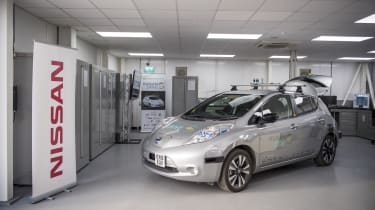
There's also the question of city driving, which is the next step in this project since the 230-mile autonomous ‘grand drive’ avoided heavily built-up areas. Of course, Nissan and its partners have developed this technology to be modular so it can be used and developed as easily as possible in various separate systems. So, as with most advanced technologies, the real benefits to the consumer will appear in drip-fed incremental improvements rather than a single grand curtain-raiser for the autonomous car.
Undeniably, autonomous cars are a divisive technology. But it does have advantages beyond safety. Basically, Nissan is now one step closer to allowing you to read a book, watch telly or just sleep through your daily commute. We can all see the appeal in that.
Recommended

Trailblazing Nissan Leaf to be reborn as a coupe-SUV in 2025
Most Popular
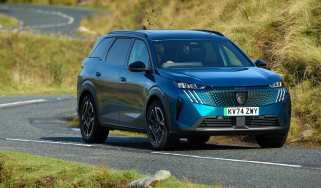
EV Deal of the Day: family-friendly Peugeot E-5008 for £261 per month
